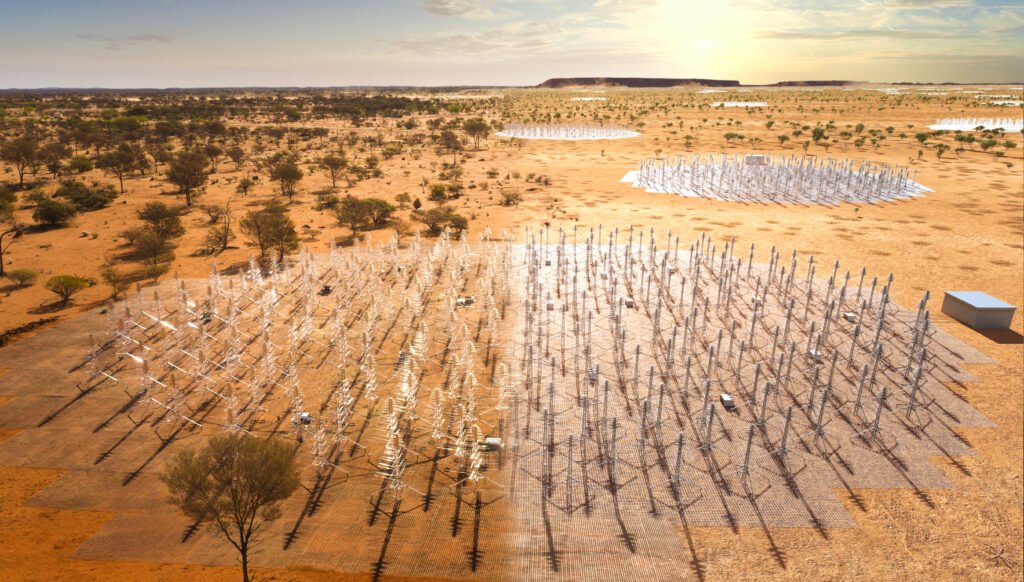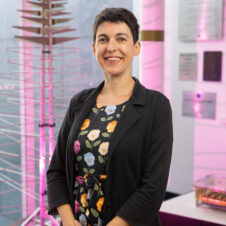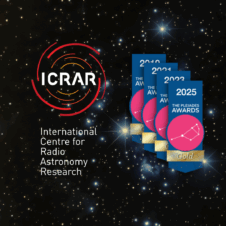
Nicholas Pritchard, ICRAR/UWA software engineer and data scientist working on the Square Kilometre Array telescopes
An ICRAR/UWA software engineer and data scientist working on the Square Kilometre Array telescopes has been identified as a leader of the future with the award of a prestigious scholarship.
Nicholas Pritchard, 25, has been awarded a Westpac Future Leaders Scholarship to undertake a PhD in data-intensive astronomy to progress the use of artificial intelligence in radio astronomy.
The scholarships are valued at more than $2 million, providing each individual with up to $120,000 for graduate-level research or coursework studies, including a nine-month bespoke leadership development program and international experiences.
After studying for an undergraduate degree in computer science at UWA, Pritchard went on to complete his Honours at the UWA-led International Centre for Radio Astronomy Research (ICRAR), focusing on the huge challenge of reconciling observational science with extreme-scale computing.
For his PhD, Pritchard will be supervised by ICRAR big data specialists Professor Andreas Wicenec and Dr Richard Dodson, and Professor Mohammed Bennamoun from UWA’s School of Computer Science.
“I will investigate using artificial intelligence to remove radio frequency interference that can cloud our observations of the Universe,” Pritchard said.
“Everyday electronic items like mobile phones, microwave ovens, and orbiting satellites create radio noise that can impact radio telescopes observing weak signals that have travelled for billions of years through time and space.
“This is what we’re trying to help astronomers overcome.”
The SKA will include two telescopes, one built in Western Australia’s Murchison region and the other in South Africa. In the project’s initial phase, the telescopes are expected to produce up to 500 petabytes of data each year — equivalent to a stack of books 16 million kilometres high.

Composite image of the SKA-Low telescope in Western Australia. The image blends a real photo (on the left) of the SKA-Low prototype station AAVS2.0 which is already on-site, with an artist’s impression of the future SKA-Low stations as they will look when constructed. These dipole antennas, which will number in the hundreds of thousands, will survey the radio sky at frequencies as low as 50Mhz. Credit: ICRAR, SKAO.
Pritchard said receiving the scholarship was a terrific opportunity for a young researcher living in a part of the world that is sitting at the confluence of radio astronomy research and big data.
“With the construction of the SKA telescopes underway after many years of design and development, we’re on the cusp of an unprecedented wave of astronomical discovery,” he said.
“I’ve always dreamed of doing my bit to push back the frontiers of computing to help solve some of our grandest challenges. It’s certainly an exciting time to be in data science.”
MORE INFORMATION
The Westpac Scholarship Program
The Westpac Scholarship Program supports individuals who are undertaking post-graduate study that will ultimately make a difference to Australia in one of four areas — technology and innovation, fostering Australian-Asian ties, reducing Australia’s environmental impact, and creating a more inclusive country. www.scholars.westpacgroup.com.au
ICRAR
The International Centre for Radio Astronomy Research (ICRAR) is a joint venture between Curtin University and The University of Western Australia with support and funding from the State Government of Western Australia.
The Square Kilometre Array
Australia will host SKA-Low, which will have 131,072 antennas receiving low-frequency radio waves. Each antenna will be 2 metres tall and shaped like a Christmas tree. SKA-Low will be constructed at Inyarrimanha Ilgari Bundara, the CSIRO Murchison Radio-astronomy Observatory in Western Australia.
South Africa will host SKA-Mid, which will be made up of 197 dish antennas receiving mid-frequency radio waves.
The Australian SKA site is:
- in remote Western Australia, around 800 km north of Perth
- part of the ancestral lands of the Wajarri Yamaji
- in the Australian Radio Quiet Zone WA to protect the telescope from radio interference from electronic devices.
Construction on the SKA telescopes has started and is expected to finish by 2029. Find out more. www.skao.int
INTERVIEWS
Nicholas Pritchard | ICRAR/UWA | nicholas.pritchard@icrar.org
Prof. Andreas Wicenec | ICRAR/UWA |andreas.wicenec@icrar.org
MEDIA SUPPORT
Annelies Gartner| PR and Media Manager | annelies.gartner@uwa.edu.au | +61 8 6488 3229

